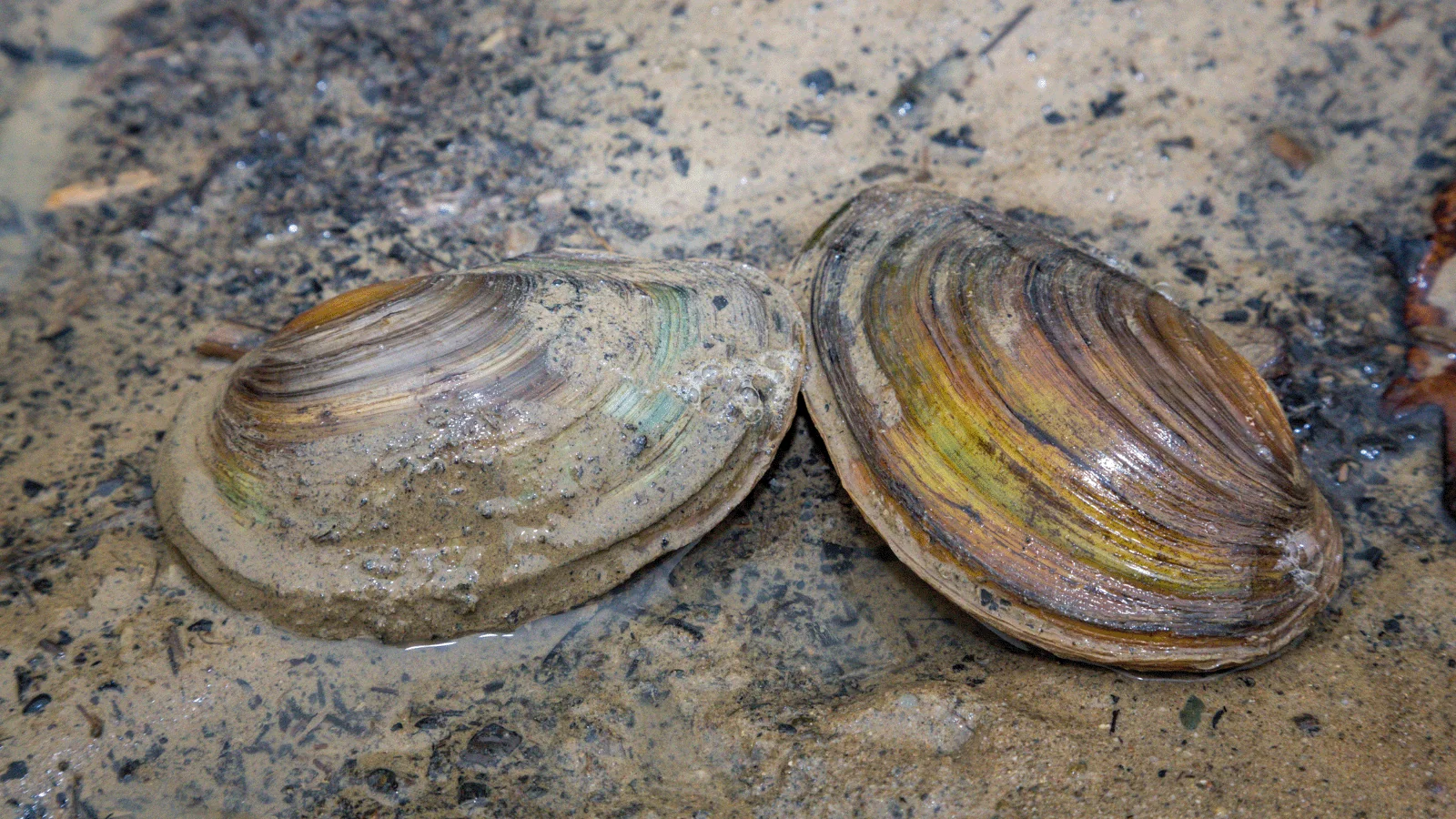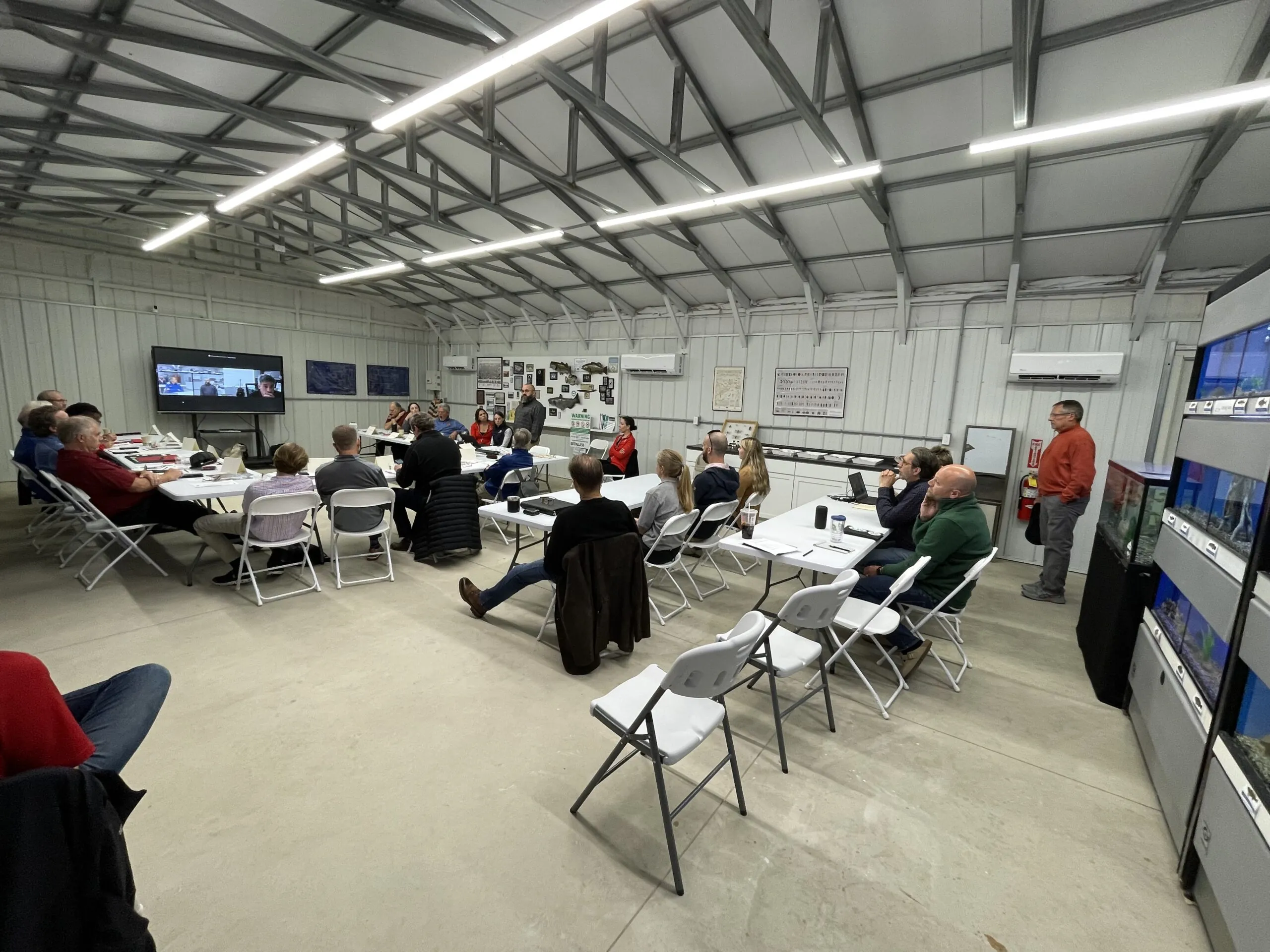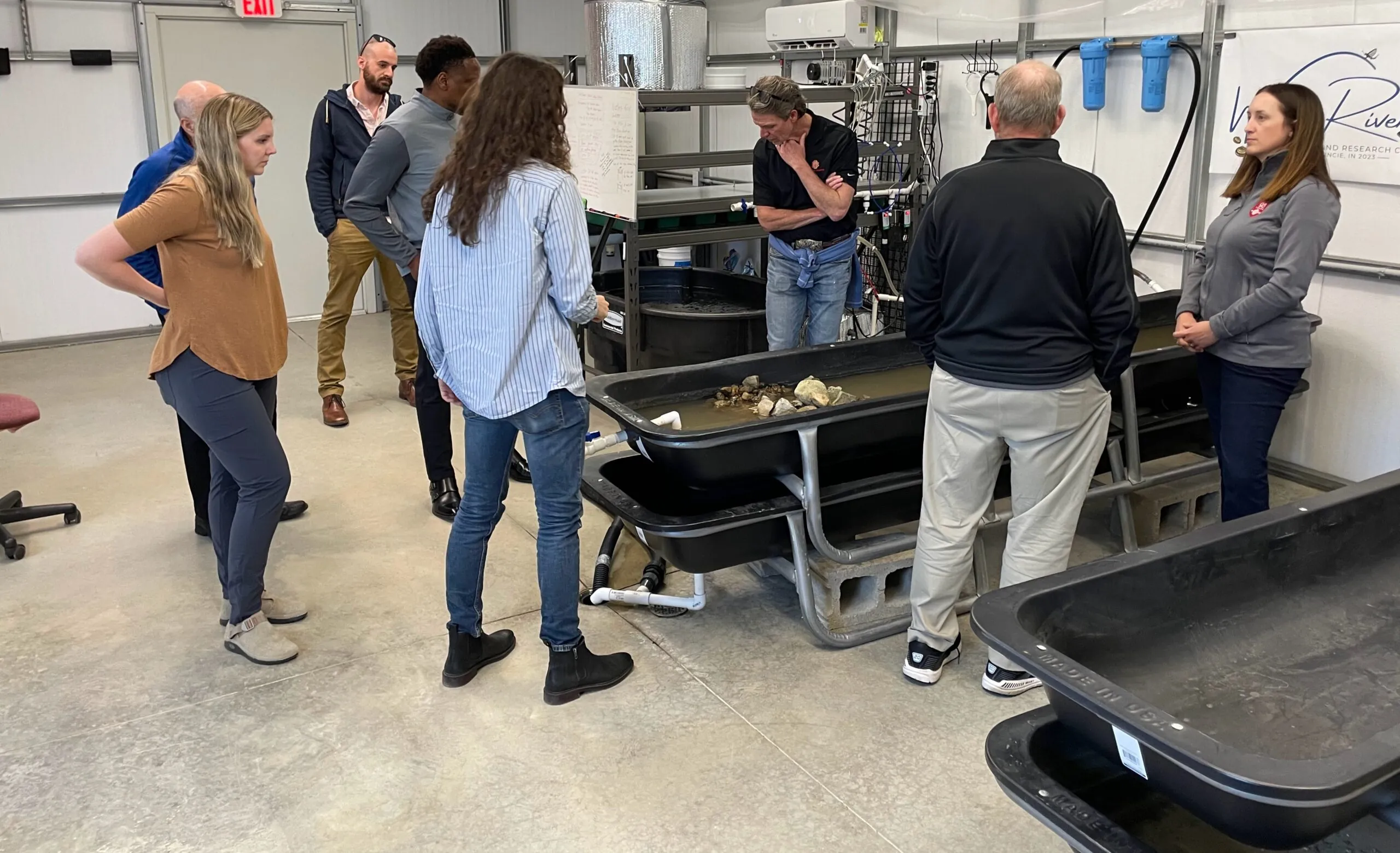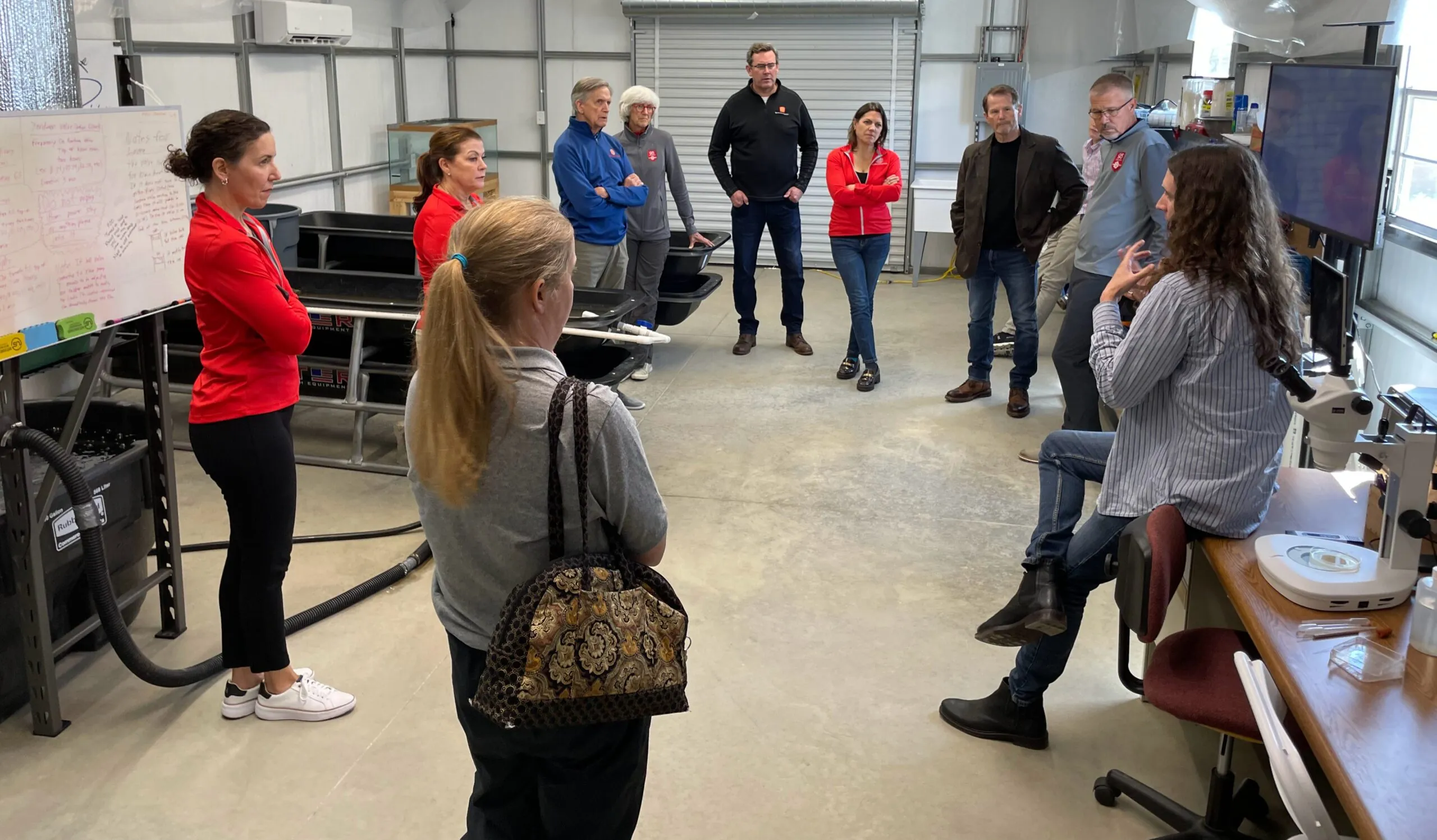
Freshwater Mussel Conservation
What has one foot but no eyes, has water filtration superpowers, yet looks like a rock? A freshwater mussel! These unassuming creatures are the unsung heroes of our freshwater systems. With more than 300 species, North America is the world’s hotspot for freshwater mussels. While species richness is highest in Alabama (with more than 130 species), Indiana is still home to at least 60 native species of freshwater mussel.
Freshwater mussels are the natural engineers and filtration systems of our rivers and lakes. Their filter feeding cleans the water, recycles and stores nutrients. They support food webs, and mussel beds provide habitat for other species. They also have been of cultural significance to Native Americans for millennia, and of huge economic significance to the button industry (yep, mussel shells were historically used to create buttons). But freshwater mussels are so much more than just functionally important. These famously sedentary creatures have evolved some of the most fabulous adaptations in the animal kingdom, allowing their parasitic larvae to catch a ride and a meal from unsuspecting host fish. Some freshwater mussels have developed lures to entice their host fish to come to them. These lures mimic the host fishes’ prey (think little fish, like minnows etc) and when these predators come to feast, instead they get a mouthful (and gill-load) of mussel larvae! Mussels 1, host fish 0.
Unfortunately, freshwater mussels are also highly threatened across the U.S. More than 70% of North American freshwater mussel species are in decline, 7% are extinct, 21% are listed as endangered, and another 40% are listed as threatened. Like in other parts of the U.S., freshwater mussels were once abundant in Indiana, but now many populations are too small and fragmented to effectively reproduce. 25 species are listed as a Species of Greatest Conservation Need (SGCN) by the Indiana Department of Natural Resources (DNR). Federally, the picture isn’t any better. Thankfully, there are many facilities across the country raising these remarkable species for conservation, and now there is one right here in central Indiana!
The Bureau of Water Quality’s (BWQ) White River Freshwater Mussel Propagation Facility is run by The Muncie Bureau of Water Quality, and it was made possible through funding from The Nature Conservancy, Indiana DNR, The Brown Family Charitable Fund, and the Indianapolis Zoo. The facility saw its grand opening earlier this summer, on June 11, 2024. Over time, it aims to restore Indiana’s mussel populations, thereby improving water quality and river health, and providing food for other species such as fish, mammals and birds. In addition to the propagation facility, there is also an education facility where visitors, especially school groups, can learn about freshwater mussels, other freshwater biodiversity and ultimately freshwater health.
The facility has been working with three pilot species since 2021: the wavyrayed lampmussel (Lampsilis fasciola), the plain pocketbook (Lampsilis cardium), and the kidneyshell (Ptychobranchus fasciolaris). While all mussels (and shells) are protected in Indiana, the kidneyshell and wavyrayed lampmussel are listed as State Special Concern. The facility has already placed 123 plain pocketbook mussels in the White River and Buck Creek that were propagated in 2021 and is currently focused on wavyrayed lampmussel rearing.
The White River Education and Research Center is next door to the propagation facility which has 18 aquariums that house 29 species of native fishes from the White River and its tributaries, and there are displays showing the many aspects of water quality addressed by the BWQ: from biology of fish, macroinvertebrates and especially freshwater mussels to chemistry and how the BWQ samples the river for water quality purposes. The BWQ has held organizational, educational, environmental and water quality meetings at the facility, with the goal of holding education outreach programs for local school groups, focusing on all aspects of water quality. The Indianapolis Zoo is proud to have been a part of this journey so far. With new plans afoot for Association of Zoos and Aquariums (AZA) facilities to become more directly and actively involved in North American freshwater mussel conservation, we’re looking forward to many more years of collaboration with this new facility!
This blog was a collaboration between experts at the Global Center for Species Survival, including Freshwater Conservation Coordinator Dr. Monni Böhm and Global Center intern Michael Hannon, as well as Laura Bowley from the Muncie Bureau of Water Quality.
Photos courtesy of the Bureau of Water Quality.
Published September 4, 2024




